Diet: Can we be Healthy and Sustainable?
This week, food is on the menu! Do any of the diets that you hear about actually work? What's best to eat for the health of the planet? And will the steak of the future grow in a test tube? Plus, scientists fix cells with the wrong numbers of chromosomes and how birds use magnetic fields to navigate.
In this episode
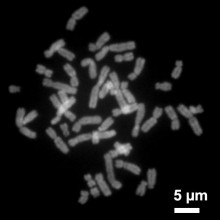
00:53 - Can we re-programme cells with the wrong numbers of chromosomes?
Can we re-programme cells with the wrong numbers of chromosomes?
with Dr James Turner, Crick Institute London
Scientists have discovered a way to put right cells that contain the wrong numbers of chromosomes - these are the chunks of DNA that contain our genes. Normally, human cells contain 23 pairs of chromosomes, with one of each pair coming from each of two our parents. But, occasionally, something goes wrong and one or more extra copies can crop up in some - or all - of our cells. This happens quite often in the sex chromosomes - these are the X and Y chromosomes you have if you're a man and the two X chromosomes you carry if you're a woman. About one in 500 men has an extra X chromosome in their cells, and this can affect their fertility by preventing healthy sperm production. Chris Smith spoke to James Turner, at the Crick Institute in London, who has potentially found a way to fix this, and possibly other problems like it…
James - You’re trying to set up in a dish a system for studying the precursors of these sperm cells in a mouse model. These are mice that have these equivalent conditions to what humans do so three sets of chromosomes instead of two sets of chromosomes. To do that the first thing that you had to do was to make stem cells from these animals because if you have a stem cell, a stem cell is essentially that can give rise to any cell of the body and can also renew itself, then you can prompt those cells to differentiate into sperm.
So we started by taking small pieces of skin from the ears of the mice that had these conditions and we performed a process called reprogramming; they essentially convert from being a skin cell back into a stem cell. When we did that we found, to our surprise, that a number of the stem cells that we recovered from this process of reprogramming had actually converted their sex chromosome number from three to two. For example, if we start with a mouse that was XXY and we recovered from that mouse stem cells that had an X chromosome and a Y chromosome, so the usual two sex chromosomes. This really surprised us because it suggested that the process of reprogramming is somehow correcting this chromosome abnormality.
Chris - If you do this experiment in a mouse that doesn’t have this chromosomal abnormality to start with so it doesn’t have XXY for example, it has just XY, does the same thing happen or is this purely happening in the context of when you start with an abnormal number of chromosomes?
James - That’s where things get really interesting. We do see loss of one of the two sex chromosomes if we start with an XY, but the frequency at which that happens is very, very low compared to if you start with a cell that has three sex chromosomes. The term we actually use is three sex chromosome biased chromosome loss or trisomy biased chromosome loss.
Chris - It’s almost as though the stem cell, when it’s being made, can count chromosomes, knows there’s something wrong with the number of chromosomes related to the sex chromosomes, and does something to correct the process?
James - Sure. That would be the immediate conclusion - a very exciting conclusion. Actually, what we think is happening is, potentially, something rather more pedestrian. We think that during the process of reprogramming what’s happening is that this is actually quite a stressful event for the cell to go through and so although we need to do more experiments to work out exactly what’s going on, what we think is happening is that if, at some level, within that pool of cells within a dish you have one or two cells that are spontaneously losing that extra chromosome, and that when you subject those cells to reprogramming there is some selective advantage or better ability for those cells that are corrected to accelerate through the reprogramming process and divide perhaps more rapidly than the cells that retain the three sex chromosomes.
Chris - Does this process apply just to the sex chromosomes, or if I took an individual, say with Down’s Syndrome who has too many copies of chromosome 21, does that also correct itself?
James - Yes. We performed two experiments. We used the mouse model of Down Syndrome, so this is a mouse that carries a copy of human chromosome 21. We performed exactly the same experiment and what we found was that some of the stem cells that we recovered had indeed lost this copy of human chromosome 21. We think that this is probably just the tip of the iceberg. There could be many, many different sorts of additional chromosome-type abnormalities that could be corrected using this process.
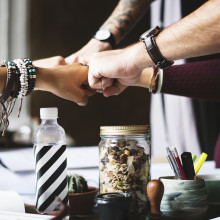
05:48 - Why more diverse groups make better decisions
Why more diverse groups make better decisions
with Dr Dan Bang, University College London
From whether to have another cup of tea in the morning to choosing whom to employ - decisions are integral to every moment of our lives. But how do you ensure that you always make the best decision possible? A review of the literature out this week has revealed certain dos and don’ts - and one of the dos is to make your panel - or committee - as diverse as possible. Georgia Mills made the executive decision to speak to lead researcher Dan Bang, from University College London, and find out why diversity makes for a good decision…
Dan - We started by asking what characterises a good decision, and how do we know which action is the best among all the available options? Then what we did was to apply insight from psychology and mathematical models of decisionmaking to try to unpack this process into component parts, if you like.
Georgia - So you were looking at previous studies, and previous real world examples of decisionmaking where we knew, in hindsight, what the best decisions were, and then you analysed this to try and search for common problems, or common good things that people were doing?
Dan - Yes, exactly. So you identify a bad decision and then you try to reverse engineer what went wrong. This is where models of decisionmaking are very useful because we can ask what went wrong and at what stage of the process it went wrong.
Georgia - What did you find?
Dan - What is important for understanding the main findings of our review is a metaphor for decisionmaking that we often come back to and that involves hilly, misty landscape. You can think of each point in the landscape that is corresponding to the different actions that we can take at a given moment in time, and then the landscape contours indicates how good each action is. So what you have to do as a decisionmaker is to find the highest peak in this landscape but, because of the mist, this process is slow and taxing. And often we will wrongly believe that we have found the highest peak even when, in reality, we are standing on a small bump.
The benefit of group decisionmaking is that more people are involved in the search for the highest peak and, therefore, more likely to find it. However, if our review we uncovered several social dynamics and biases that stops groups from finding the highest peak. One problem that we identified was the lack of independent knowledge, and the reason why this was problematic is that then the benefit of combining information from multiple people is massively reduced.
Georgia - Oh, I see. So, if there’s one of you searching around this hilly landscape, you’re maybe going to find the highest peak but it’s a lot better if you have a lot
of people searching, but if everyone thinks in the same way it may as well just be one larger person searching round this hilly landscape?
Dan - Exactly. If we think in the same way we’re likely to start searching in exactly the same place. People have to be different in different ways, if you like. So what we do is that we distinguish between different kinds of diversity, we think of identity diversity which is individual differences in personal characteristics. Characteristics that we can all see, such as gender, age, cultural background. But then there’s also a more subtle form of diversity which is functional diversity and that is differences in how people think and solve problems.
If we have people from diverse backgrounds, then they’re not likely to share the background knowledge, and they’re also not likely to acquire new information in the same way. So in this way they’ll start up in different points in the landscape.
Georgia - With large groups making decisions you have more expertise, but then there’s this idea that you just spend all day talking, and then there's this kind of inertia of having too many people rather than one person just having a vision and saying “right, we're doing this and we’re getting this done”.
Dan - Absolutely. But I think when you make a group decision, what’s important is to acknowledge the tradeoff between speed and accuracy. Often, fast decisions are not the most accurate, whereas the most accurate decisions tend to be slower. In fact, what we uncovered in the review is that discussion is actually a very useful thing to do. What you often find in larger groups is that they then decide to vote on what they should do. This is not a very good idea because this throws away a lot of useful information. So if you want to combine votes from different people then you need to have some mark of reliability in place and you need to weight the words accordingly. You should assign more weight to an opinion that is based on better information.
Georgia - So not everyone in the group is equal?
Dan - No. We all think that expertise should play a role in group decision making. However, we are remarkably bad at recognising expertise. There’s this finding in the literature called Dunning-Kruger effect, that the worse you are at a task, the more delusional you are about your own ability. So, surprisingly, it acquires expertise to know the limits of your own knowledge. People are very good at something are not sufficiently confident, so they take other people’s opinion into account too much.
Georgia - Beware of the person with the loudest voice then?
Dan - Definitely.

11:06 - Going mobile: Ten years of the iPhone
Going mobile: Ten years of the iPhone
with Professor Joe McGeehan, Bristol University
It’s now ten years since the launch of the first iPhone. One of the pioneers who led the way in mobile communications is Professor Joe McGeehan, based at the University of Bristol. You might not be familiar with his name but the technology he helped to develop still plays an essential role in wireless communication devices today including, of course, the iPhone. Jane Reck has been taking a look at Joe’s contribution to research in communications which takes us back to the 1970s.
Jane - From mobile phone networks to secure scrambling communications systems for the police…
Joe - I’ve always been intrigued by big problems.
Jane - Professor Joe McGeehan’s research in microelectronics has played a major role in the development of wireless mobile communications….
Joe - I had not preconceived ideas about what might works and what might not work.
Jane - From wifi, 3G and 4G, to smart antennas that can send and receive many signals simultaneously. Today, Joe is Emeritus Professor of Communications Engineering at the University of Bristol and Senior General Advisor to the Toshiba Corporation.
However, in the early stages of his career back in the 1970s, mobile communications was barely recognised as a field of research…
Joe - When I started a mobile radio I had a very simple vision, and that was that everybody one day would have and own a mobile phone. Most people thought I was slightly mad and certainly, even those in the field, when I was looking at things such as 3G for transmitting video and so on, even then they still felt that proposals such as that were crazy.
Jane - What started things off in the 1970s was a small grant, under £10,000, from the Science Research Council, now known as the Engineering & Physical Sciences Research Council. Joe’s early exploratory research at the University of Bath, then Bristol, helped pave the way for the wireless mobile communications we all take for granted today…
Joe - If you take a normal mobile radio system, you have a transmitter on a hilltop or on top of a building. You would transmit into a city or urban area and the only way that the signal would reach their mobile was by multipath, so the signal would be reflected from buildings, from rooftops. And at the input to the receiver at the receive antenna you’d get a summation, constructive and destructive interference of the received signal.
It was that interference that gave amplitudes distortion and phase-distortion of the received information. So for speech it sounded like Donald Duck, and it made data communications just about impossible. If you’re going to use this type of system going forward you would have to solve that fundamental problem, which was to remove the multipath distortion from the received signal, and that’s where I started. Then the world opened up to being able to send data at very high levels which had been hitherto impossible.
Jane - As we mark ten years since the launch of Apple’s first iphone, how much of today’s technology can be linked back to the research that Joe was involved with in the 1970s?
Joe - A lot of the technology, I think, we can trace back to the southwest here. I think what Apple did was to bring design and software into it as well. They made the phone very easy to use that they allowed different digital instruments to be able to be easily interconnected. It was a tremendous job - it was attractive, it was simple to us, so really a big step forward in design software I would say.
Jane - Joe’s pioneering research is only one part of the story though. His strong links with industry have also played an important role in helping to make the southwest a world class player in the semiconductor industry…
Joe - Going back to the days of Plessey. When I started on Plessey, we had a manufacturing plant for semiconductors here in Swindon. What Swindon did was to pave the way - this was Plessey Semiconductors and that became GEC Plessey Semiconductors. They were actually doing work in the application of silicon technology to a whole range of things including communication circuits. We then had IMOS in the southwest region as well, and that grew and that spawned lots of other firms. So over fifty/sixty years or so, we’ve now seen a massive cluster form down here in the southwest, second only to California.
If we look at the growth of mobile communications, I think we now have something like eight billion phones in the world. That’s going to grow massively so we’re going to be in trillions. One of the things I got interested in recently was proposing that we deploy a mesh network in the Bristol city region for doing the sort of experiments we need to do in driverless cars, connected vehicles, and also in pollution and traffic flow.
A mesh network is a system that allows you to monitor, in a connected way, across a region what's actually going on in terms of the sensors you’re using. If we can do experiments like that then we can start to influence the future smart cities, and we can start to look at how we make things better for society.
Jane - While the challenges facing researchers may be changing, Joe says the importance of supporting exploratory research today is just as significant as it was when he began his career.
Joe - R is for research, but R is also for risk, because without risk there’s no growth. Because unless we make things and sell things, then who's going to pay for the Health Service, who’s going to pay for the education system or what have you? I’m looking at work now I started 45 years ago which is now coming to fruition - big time. We have to capitalise on that if we’re going to survive in what is a highly competitive world.
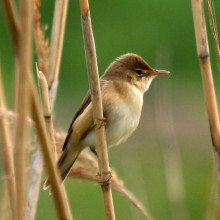
17:42 - How do birds navigate?
How do birds navigate?
with Dr Richard Holland, Bangor University
Birds are some of the planet’s best navigators - many migrating thousands of miles each year. But how do they find their way around? Scientists think that they have a form of in-built compass that enables them to tune in to the Earth's magnetic field. But there's still a problem with that explanation: it would enable them to navigate north to south by following the strength of magnetic field lines, but it wouldn't tell them where they were around the planet in an east-west direction. Or would it? By magnetising migrating reed warblers in Russia, Richard Holland from the University of Bangor reckons they're exploiting the difference between magnetic and true North to work out where they are - as Chris Smith found out…
Richard - Every year, obviously, there are billions of birds migrating between Europe and Africa and then back again the next year and these are reed warblers which are quite a long distance migrant. These ones that we’ve been looking at, they are migrating from a place called the Courish spit in Russia and they migrate down to Western Africa.
What is still something of a mystery is how are these birds that are able to make these huge journeys are able to actually navigate during that because we know from previous experiments we’ve done that if you displace them from their normal path to a place they’ve never been to before, they can actually correct for this. It’s not that they’re following familiar routes, they’re able to extract some information from the environment that allows them to calculate their position, even when they’ve been displaced to a place they’ve never been to before.
Chris - What do you think that might be?
Richard - There’s a number of theories, but one theory is the Earth’s magnetic field is providing at least some of the cues. We have some evidence that birds are able to use the strength of the magnetic field to indicate where they are on a north/south axis - what map readers call latitude. So the Earth’s magnetic field is stronger as you approach the magnetic poles and weaker at the equator.
But what has actually remained a mystery to us is what they can then use to decide where they are on an east/west axis - what a map reader would call the longitudinal axis. It was also a problem for human navigators which famously was solved through the longitude prize using a very accurate clock and referencing Greenwich Mean Time to the time of sunrise or sunset or the stars.
Birds don’t appear to do that. We’ve tested that already to see where the birds are similarly using some sort of clock to try and calculate their position on this east/west axis, and that doesn’t seem to be the case.
Chris - So if you jet lag the birds, in other words, they still find their way?
Richard - They still find their way. It doesn’t seem to affect them.
Chris - So they must be doing something else?
Richard - Yeah. There’s been a proposal around for a long time based around something that we call declination. Now declination, again, is something that map readers will be aware of. Declination is the difference between the actual physical north pole, so the top of the Earth and the location of the Earth’s magnetic pole that a magnetic compass will point to.
Chris - In other words there is a difference between what we call true north of the planet and magnetic north? On the ordnance maps that was always an arrow that was slightly off from grid north and you had to reset your compass a few degrees to account for that.
Richard - Exactly.
Chris - And you’re saying what that birds can register that?
Richard - Our experiments seem to suggest that the birds are actually using this. So as you go from east to west across Europe, the degree difference between magnetic and true north changes and it’s therefore, potentially, a cue to this position of the east/west axis on the longitude axis. So what we did in our experiments was to shift the magnetic field by 8 degrees and keep all other cues the same so the birds actually were in Russia. And the birds were sat inside a device called a helmholtz coil, which allows us to change the strength and direction of the magnetic field.
So all we did was make it point 8 degrees to the left of where it would normally point and the birds response to that was quite remarkable. If they’d just simply been using the magnetic field direction as a compass cue they should have only shifted their orientation by 8 degrees. What happened was, instead of heading southwest as they normally do, the shifted dramatically round to southeast and actually responded as if they were in Aberdeen.
Chris - That’s almost like a 90 degree change in direction?
Richard - A 90 degree change in direction.
Chris - From an 8 degree shift in the magnetic field?
Richard - From an 8 degree shift, exactly. So they’re actually this magnetic compass cue as a GPS device, effectively, to locate their position on the Earth.
Chris - Is this a learned thing, Richard, or is is something they are born with? In other words, if you take animals that have done their migratory journey once before, are they the same in this behaviours as animals that have just popped out of the egg and they are doing it for the first time?
Richard - No. And that’s another interesting finding from our experiments. Birds that responded with this dramatic shift were birds that had previously already made a migratory journey. When we showed birds that were first ever making their first migratory journey, they became completely confused by the change in declination.
Chris - So, in other words, they encounter this declination, the distortion of the Earth’s magnetic field away from true north When they’re making their journey they integrate that and learn to use that as a guidance cue, so when you then deform or distort that cue when they’re older by putting them in this coil apparatus that’s why they then go off course?
Richard - Exactly yes, so it’s something that they’ve learned.
Chris - Are we any closer yet to nailing how they are “seeing” this magnetic field, and not the magnetic field but the change in intensity of the magnetic field?
Richard - That’s a whole field within the field itself in fact. There are two hypotheses for how birds can detect the magnetic field: one is that they actually effectively detect it through the eye. We think there are some photoreceptive chemicals that also react to the Earth magnetic field. There’s another competing hypothesis that suggests that animal and birds in particular have sensory cells with small magnetic particles in them, and that these magnetic particles move in response to the magnetic field and that signals the strength of the magnetic field.
These two competing hypotheses people continue to test to see just how much evidence they can find for these. But those are the most likely ways in which we think birds will detect the magnetic field at the moment.
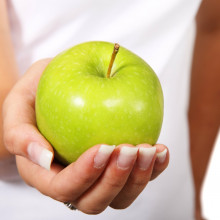
25:05 - Diets: Sorting fact from fiction
Diets: Sorting fact from fiction
with Rebecca McManamon
When it comes to food it’s difficult not to be overwhelmed by the sheer volume of dietary information out there. To separate food fact from fiction, and to find out what really does constitute a healthy diet, Chris Smith spoke with dietician Rebecca McManamon.
Rebecca - People think that diet means some kind of a restrictive diet which, in some senses, it might be, but really diet is describing our eating pattern overall - what we need to nourish our body. We need to have a real balance of things.
Chris - When you say “balance,” what do you actually mean by balance? What constitutes what a doctor would regard as eating a healthy diet?
Rebecca - Certainly lots of fruits and vegetables. We know in this country children and adults don’t eat enough fruit and vegetables and that increases our risk of chronic diseases. But also it’s about a mix of other foods, so thinking about our proteins. Things like oily fish are beneficial, whitefish, all sorts of meats, but also our plant based proteins, nuts and seeds, soya for example - all those other kinds of proteins.
There are other components to our diets, so thinking about our carbohydrates which have certainly had a lot of bad press in recent years. But, let’s not forget that carbohydrates we need for energy and also they’re a source of fibre. Something, again, we don’t really get enough of and which is beneficial to us. So we do need some carbohydrate in our diet but perhaps in recent years we’ve been eating more than we need and there’s a lot of processed carbohydrates out there.
Chris - When I went to medical school they put up a graph and it said this is the number of calories you need in a day. If you’re a man it’s 2,000/2,500 and you should get about half of that from carbohydrates. You should get about a fifth of that pie (20%) from proteins, and the third left should be, give or take, the fats. Does that still hold?
Rebecca - We probably don’t need as much carbohydrate as 50% of our diet and fat, again, is another really interesting area. For example, the low fat diet has previously in the 80s and 90s thought to be the way that we should deal with chronic diseases but, perhaps, fat can be beneficial. But, like any food, if we’ve got too much of it we do need to be cautious.
Chris - A little bit confusing, isn’t it, because carbohydrate does include highly refined, processed sugar but it’s also starches and complex sugary based things which are harder to break down and, therefore, they’re called carbohydrates, but they’re not as energy dense or they don’t release as many calories all at once? You mentioned fruit earlier and vegetables as well. A lot of people say well, I’ll substitute a smoothie. I’ll eat smoothies and things, that’s full of fruit and vegetables. But I’ve just got one we got from the shop around the corner. The amount of energy in this is huge.
Rebecca - Definitely. It might even be similar to some popular fizzy drinks in those calories and the amount of carbohydrate that’s there which can go into your bloodstream quite quickly. You’re missing out potentially the fibre when you’re having smoothies and that time that we take to enjoy our food. That’s something that we forget about diets is that food is to be enjoyed, it’s pleasurable, and it’s very sociable.
They do still have a place if somebody really can’t eat fruits and vegetable, and even for some of my clients that need to gain weight. We also forget that malnutrition is still a problem in the UK.
Chris - Now flipping it round to the other side of the equation - people who may wish to shed a bit of weight. I’ve got sitting on the table with me some examples of a few diets. Let’s talk about the paleo diet first of all. What’s that just briefly?
Rebecca - The paleo diet, or the caveman diet, is thought to be all about going back to the times when we did live in caves and our diets were very basic. Maybe we didn’t have grains in our diet and it’s this belief that this is going to be a more beneficial thing.
Chris - I’ve got some pumpkin seeds here, and some chicken chunks, and few bits of nice crunchy carrot. This is, ostensively, part of the paleo diet - is that any good?
Rebecca - Certainly those are good aspects, and certainly thinking that the paleo diet believes that you shouldn’t have much salt or processed foods, certainly those are good things. But foods that contain grains, they also have fibre. We also know that some benefits like, for example, oats, there’s a lot of research that that can help lower our cholesterol if we eat oats on a regular basis.
To restrict a food group is worrying because then what are we missing out on? There’s very little data to show that this paleolithic diet is actually going to be of benefit for our health.
Chris - What about the 5:2 diet? Because this has got a lot of advocates; people who eat for five days normally, as they dub it, and then have two days of very profound calorie restriction. Is there merit in that?
Rebecca - Certainly there’s been research at the University of Manchester into this with breast cancer that it may help in the prevention of recurrence of breast cancer because that’s related to obesity and, also, insulin levels in the 5:2 diet can reduce insulin levels. For the general population, we’re not so sure if it’s the best for everyone.
Chris - We’ve considered so far the paleo diet, we’ve looked at this 5:2 diet and whether or not that might work but there is one other diet. I have to admit I’d never heard of this but then I’m not dieting. That’s this alkaline diet - now what’s that?
Rebecca - The professed way that the alkaline diet may help you is that it would alter your Ph, and this worry that if we have acidic foods that this is going to be negative to our body but, actually, there’s really no scientific grounding in this. We all know about homeostasis and, ultimately, that’s what our kidneys and the rest of our organs are going to be working in combination to do, is keep the Ph of our blood very stable, otherwise we’d become pretty ill.
Chris - Yes. One of the items - I’ve got here some kale, I’ve got some walnuts. Those are apparently part of the alkaline diet, and an orange. I was quite surprised that an orange, which is obviously quite low Ph, isn’t it, it’s full of acid, that would be on the alkaline diet? Is this an example of charletons just flogging us an idea - it’s not really underpinned by decent science?
Rebecca - No, it’s not underpinned by science. In the 70s, 80s there was some view that this was actually called the acid hash hypothesis, that acidic foods perhaps would be bad for our bone bone density. But that’s been very much disproven now. One of the things that alkaline diet advises you not to eat is dairy foods which, of course, if we know of someone who was going to restrict dairy, and also some protein is advised to be restricted in this diet, then that would certainly not be good news for our bones.
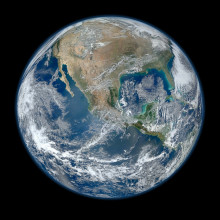
32:09 - How can we eat healthily and sustainably?
How can we eat healthily and sustainably?
with Dr Peter Scarborough, University of Oxford
People often think about eating for their own health, but what about the health of the planet? What changes could we make to our diets that will also have an impact on our carbon footprint, particularly as the world population continues to grow? Georgia Mills put these questions to Peter Scarborough from Oxford University’s Nuffield Department of Population Health, asking first how much of an impact do our food choices actually have on the environment?
Peter - Diet is a good place to start if you’re looking to reduce your global carbon footprint. Not many people realise that the food that they eat has a massive implication on greenhouse gas emissions. In fact, in total 30% of the world’s greenhouse gas emissions that are produced are from the global food systems.
Georgia - Can we juggle these ideas of being healthy and being sustainable at the same time?
Peter - We can, but there are some tensions. The classic one is fish, so the healthy advice for healthy eating is for everyone to eat two portions of fish a week, one of which is oily fish. If everyone in Britain actually met those guidelines, there’d probably be no fish left in the sea; that clearly works against sustainability.
There are ones that are the other way round as well. In sustainability terms it’s best off if we eat all of the food that we produce. So things like sausages and other kinds of processed meat is very good for sustainability because you get cuts of meat that otherwise wouldn't be eaten and you wrap them up with salt and saturated fat to make them palatable, and they’re not good for health. But the general message of being able to eat a healthy sustainable diet largely can boil down to one area and that is meat consumption. So if are eating a diet that is lower in meat, higher in plant based foods, then you’re probably hitting something which is both healthier and better for the environment.
Georgia - I know it’s an age old debate isn’t it - should we be vegan, vegetarian, or continue to eat meat? What do the numbers say I guess?
Peter - In terms of the sustainability, we’ve known for a long time that greenhouse gas emissions related with plant based foods compared to meat based foods are far, far lower - orders of magnitude lower. That’s particularly the case for ruminant meats, so that’s for cows and for sheep because that’s basically about the kind of processes that are involved in the way that meat is raised. When you’re talking about animal based products you’ve got inefficiencies in the system of raising livestock, which is about the fact that you have to feed animals with food that otherwise could have gone to human consumption.
Then you’ve also got natural systems with ruminants like methane production when cows burp and they fart. Essentially methane is about 25% times as high a greenhouse gas emission as carbon. So they all add up to a much higher greenhouse gas emissions for meat based foods than plant based foods.
The work that we’ve been looking at is to say let’s take a vegetarian diet and a vegan diet and compare it to a meat based diet, measure the greenhouse gas emissions from those diets and compare across them. What we found was that in the UK, a meat eating diet has about double the greenhouse gas emissions of a vegan diet and about 50% more greenhouse gas emissions than a vegetarian diet.
Georgia - I know some people say veganism definitely wins in terms of carbon emission, but can you be fully healthy cutting all of this out of your diet?
Peter - Well, the results there in the dietary epidemiology is a little bit more disputed. In non-randomised studies we see that vegetarians and vegans tend to have better health outcomes than meat eaters, but that might be due to confounding. There might be other elements there that vegetarians and vegans are fundamentally different types of people than meat eaters.
We know from the Cohort studies, which are studies which look at people with different diet groups and follow them up over a long time and see how there’s differences in health outcomes. We know that there’s lower cardiovascular disease outcomes related with a lower meat diet. We also know there’s now very good evidence that a lower meat diet, particularly red and processed meat diet, is related with lower colorectal cancer outcomes. We also know from randomised control trials of short term changes in meat consumption, so moving to small lower meat diets, that’s also associated with reduction in body weight, and reductions in blood cholesterol levels.
Georgia - What should we be doing on an individual and national level to try and reduce our carbon footprint?
Peter - If you’re living in a family and two meat eaters in that family decided to go vegetarian, then that’s roughly the same sort of carbon footprint as a small family car running for a year. Similarly, if you’re a meat eater and you move to be a vegan, that’s the same as an economy trip from London to New York on a plane. It’s those sort of levels of carbon footprint you’re talking about removing from these dietary choices.
The important thing is it isn’t just about changing from being a meat eater to being a vegan, that’s a big switch, it’s a big lifestyle change that not many people would be willing to make. But we know that dietary greenhouse gas emissions are very well correlated with the amount of meat that you eat. So if you just reduce the amount of meat that you consume; start cutting it back on a few days a week, you’ll make a big impact on your dietary carbon footprint.
On a global scale you’re seeing that we’re actually making some progress towards reducing greenhouse gas emissions in a lot of sectors. We’re moving toward cleaner energy, solar power is getting cheaper and we can see a future where we can potentially have clean energy. Similarly there with transport, if you’re moving towards more cleaner energy, you can see a world where we get clean transport.
With food, it’s going in completely the opposite direction. The reason being there is because we’ve got more and more people on the planet that we need to feed. Because the developing world are getting richer, as time goes by they’re moving towards more western diets, and that’s a higher greenhouse gas emission footprint there.
Yet with all the global agreements on climate change, food never comes into it. It’s just too complicated to be within those discussions. If that came into those discussions and if food started to get included and things like cap and trade schemes, then we could start seeing price and greenhouse gas emissions within the food system. But people are very worried about that because the don’t want to see any kind of impact on food prices because that can a lot of very negative knock on effects to the world’s poorest people.
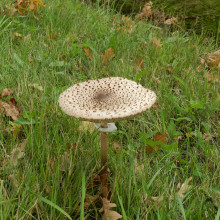
38:23 - Foraging for food
Foraging for food
with Antony Bagott, Dr Patrick Harding
For some, there's nothing nicer than finding food in the wild. Picking your own blackberries avoids food packaging waste and there’s no need for a lorry to transport them to the shop. And according to foraging enthusiasts, there’s plenty of wild-growing food out there to enjoy if you know what you’re looking for. Georgia Mills heard about Katie Haylor's adventure with foraging fanatic Antony Bagott to explore what wild food one corner of Cambridge has to offer. Here’s a little taster of what went on…
Katie - We’ve come back from the road a bit and it’s actually really quiet and peaceful, and you’re going to show us a few items that you can pick in August, is that right?
Antony - Sure. Just as we get into the cemetery we’ve got some berries here now - two types. There’s some elderberries up top and some blackberries down below.
Katie - Oh wow. That one’s really sour.
Antony - They’re a little bit small and a little bit sour. Hawthorn is one that I’ve always known from a kid and people call it bread and cheese. The leaves are like the bread and the fruit is like the cheese.
Katie - So you can make a hawthorn sandwich?
Antony - Exactly, yeah.
Katie - Go on then - give it a go. I’m not feeling brave enough…
Antony - Mmm, tasty.
Katie - Does it taste anything like bread?
Antony - It doesn’t taste anything like bread. Actually, it has a little bit of appley flavour. We’ve had a bad experience in the past with an orange birch bolete, which is a type of mushroom that grows under the birch tree. We picked it, cooked it for about 3 to 4 minutes I’d say because that’s how we cook our mushrooms from the supermarket. Within about 5 minutes he was throwing up on the beach that we were on...
Georgia - Oh dear! And we’ll put up the full version of Katie’s foraging expedition on the In Short section on our website - thenakedscientists.com/short - if you want to hear what else they found, but the experience Antony described there is why you do need to be really careful if you’re out foraging, in fact it’s best to go with an expert. Luckily, we have one! Patrick Harding is a botanist and a mycologist, so you must be an all-round fungi?
Patrick - The old ones are the best ones.
Georgia - You know about foraging for mushrooms, so why would you do this when shops sell them for not that much money?
Patrick - It’s the physical and mental well being of being out for walks in the countryside before even finding stuff. The thrill of finding and gathering wild food and the lovely thing is: okay, even these days you might be able to get 7 or 8 different sorts in the shops, but not 80. It’s a bit like variety with vegetables, variety with different meats; there’s different tastes, there’s different textures, there’s different colours - that’s what I love.
Georgia - As well as being fun and tasty, is there any other health benefits to eating mushrooms?
Patrick - Oh yes. Okay, they’re about 90% water, but that’s true with many vegetables. Fat content is definitely low and it’s mostly the better ones, the unsaturated the healthier fats. The carbohydrate is about 50% of the dry weight of a mushroom but it’s mostly in the form of chitin, which we get in fungi. It is rather tough and some people find them therefore difficult to digest, but Rebecca's been talking about the importance of high fibre. Some of us don’t get enough well, you certainly get them in fungi. There Is protein - it’s probably comparable with what we get in peas and beans; it’s just a different form of protein. And, best of all, some wonderful vitamins and high in folic acid.
Georgia - How do you identify the good from the bad mushrooms?
Patrick - Perhaps most important of all is habitat. Is it growing in the middle of grassland, is it with trees, and if so: what sort of tree? Then we look particularly at the element of reproduction; do they produce spores a bit like ferns; do they spores come out of gills or out of tubes as we get with some of our fungi?
Most important of all what colour are the spores? You can’t actually see an individual spore, so you just allow a deposit to form on a piece of glass, put the fungal cap on it for three or four hours and then you can see whether it’s white, or pink, or brown, or black. That is crucial, the spore colour doesn’t change. The problem is the same fungus: its size, its shape, its colour, its smell changes as it grows up, so we need different features and that’s so important for accurate identification.
Georgia - It sounds quick tricky. So once you’ve found one how do you go about preparing them?
Patrick - A lot of fungi are edible and wonderful. A lot of them are inedible, they’re neither poisonous nor edible. But we do have some wonderful poisons in fungi and some of those poisons are broken down by heat. So if somebody goes out and does gather the wrong one, and it’s got a poison in it, at least if they cook it they’ve got a bit of a chance that that toxin has been broken down. I by the way cook them fast and hot; I don't like them swimming in butter. That way I get the flavour and I get the texture.
Some of the poisonous ones cause a stomach upset. Some, such as the deathcap as the name implies, the end product is indeed death. Some very nasty chemicals that break down the cell walls in livers and kidneys. Quite a lot of them are in between.
Georgia - Why can mushrooms make you ill?
Patrick - The point is, as I’ve tried to say, there’s different chemicals and some are much more serious than others. One of the big problems is that one or two of the really poisonous ones you don’t start getting symptoms for up to six hours, so it’s too late to have your stomach pumped. So, again, I can see why people are suspicious of fungi, and rightly so. I would hate people to go out as a result of this programme and eat the wrong one. We’ve got enough problems in A&E as it is so please, please, identification correct first.
Georgia - So be careful when you forage. But we mentioned earlier this idea of foraging being this sustainable way to get food but if it’s more popular is there an issue here of all the mushrooms being picked - is there an issue of conservation?
Patrick - There is certainly an issue. Really it’s only in the last 30 years or so that Britain has seen this huge increase in the number of people collecting wild mushrooms, either for personal use as I do, or some people who are supplying restaurants and shops. Quite a lot of naturalist and bodies such as the National Trust have expressed concern that all this picking will lead to a decline in many of our edible fungi.
It’s very easy to point the finger and I say to people yes, there are fewer field mushrooms than there were 40/50 years ago. There are also fewer butterflies - we haven’t been eating butterflies. I think we have to be careful. What seems to have been happening with certain of our fungi has with unfortunately other wildlife, is changes in farming practice has certainly led to decline. Climate change equally. And as far as picking goes, the only scientific evidence shows that over many years picking certain edible fungi actually gave a slight increase in numbers. So I think sometimes conservationists need to get their science right.
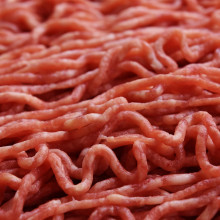
46:54 - Is there a future for lab grown meat?
Is there a future for lab grown meat?
with Paul Cuatrecasas, Aquaa Partners
In 2012, we reported on the first meat grown in a lab, which used stem cells from cows to grow strips of muscle tissue that was turned into mince and made into a burger. So now, in 2017, how has the industry advanced? Is it an economically viable future for our food? Chris Smith spoke to Paul Cuatrecasas - founder and CEO of London-based investment banking firm Aquaa partners.
Paul - There is a willingness now, as we’ve seen in the last 5 or 10 years, for consumers to try new types of food and food produced by new methods. This meat would have a longer shelf life, you can add vitamins and minerals, it reduces greenhouse gases, you can eliminate e coli and other bacteria. And probably, at the end of the day, the thing that will matter most are two things: taste and cost. If you, a consumer, can eat a hamburger that tastes at least as good as the one you’ve always eaten, and you can buy it at a lower cost, then you’re probably, over time, going to want to eat that burger. And when you have so many other reasons that I’ve described, it makes sense for the world to pursue this artificial meat, then you can start to see how this can become a reality.
Chris - Is the technology capable of meeting the challenge yet though because we’ve had things like single cell protein - quorn is one example of that that vegetarians have been forced to embrace whether they liked it or not as an alternative to meat for many years, but many people say it just doesn’t taste like the real thing? Because I think you put your finger on it when you said it will come down to taste as well as cost. Is the technology capable of delivering good taste?
Paul - It will be. Like all technologies that are developed and ultimately used or applied somehow on the mass market, it takes time. With artificial lab meat, technology and science will find a way and, in fact, I would look at this and say it’s quite amazing how advanced some companies already are. So Beyond Meat, for example, is already selling a burger in 600 Kroger stores in the US and over 300 Wholefoods stores, and these burgers aren’t that bad because people are buying them and eating them.
Chris - Have you tried one?
Paul - I have not tried one myself but I have heard what other people have said. And they said it’s not quite as good as the real thing, but when you consider it’s plant based, it’s antibiotic free, it’s hormone free, it doesn’t have GMO, soya, gluten free, no cholesterol, less fat, about the same amount of calories, same amount of protein, it’s already getting to the point where it’s getting interesting.
Chris - Because one of the key things with food is it is consumer led. It’s the most consumer led probably of all things isn't it? So what do people tend to make of this, not just the reality - here’s a burger, taste this, do you like it right now? What do people think about the principle, do they find it a digestible principle?
Paul - There have been studies done that it’s not so much the vegetarians that are interested in the veggie burger or artificial burger, it’s the existing meat lovers and people eating meat in hamburgers who are looking for a healthy alternative, and that number is growing. I don't have the statistics in front of me but it’s quite a large percentage of people. I think only 8% in the latest study I read would not be interested in trying a different form of meat. I think that could be the most significant statistic is that meat eaters today are open minded about trying a new form of meat.
Chris - What will happen to traditional farmers? Do you think that they will be able to embrace these technologies or will they become the dinosaurs of agriculture?
Paul - That is a great question. It’s not going to be an overnight thing. It’s a development that will happen over time, but there will be a period of time, whether it’s a year or two years, where there will be quite intense, disruptive change. And it will, inevitably, dramatically affect farmers and farming around the world. I actually had a conversation with the CFO of a very large company involved in the fertiliser business recently and we discussed this, and he basically acknowledged that yes, if this - let’s call it in-vitro or lab artificial meat - were to have a massive presence on the shelves, it would be the beginning of the end of their whole customer base - farmers who need fertiliser.
I think that’s the way to look at this, it isn’t just one sector, it’s not just the meat processors, but it’s the entire ecosystem. It’s the farmers, the fertiliser, it’s the supermarkets, it’s everyone. That is a big number and it has massive implications and it’s going to happen. It’s just a question of when. It’s not 20 years out, it’s more like 10 years out because we are looking today at exponentially accelerating technology. I think that is the reason we’re so interested in this and talking to the larger companies about how they can adapt and take advantage of this as an opportunity and that includes the farmers. There are ways that they can invest in this new future.
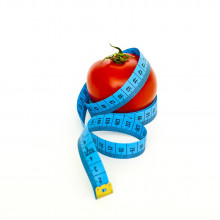
Your diet questions answered
with Rebecca McManamon
Chris Smith put your a few of your dietary questions to dietician Rebecca McManamon...
We’ve got here Gareth asking on Facebook, does burnt toast, or burnt anything in fact, cause cancer? Is that a myth?
Rebecca - There’s been some research around the chemical component when carbohydrates have undergone burning, and whether that may cause cancer. It has perhaps some link in lab studies but the human data isn’t quite there yet. However, the Food Standards Agency did advise, based on the data we know so far, to try and avoid overly burnt products if we can. However, we know there’s a lot more things that are going to be more likely to cause cancer in our diet than burnt toast to be honest.
Chris - Chris Hallam on Twitter: is there any benefit to protein shakes in a diet to build muscle or lose weight?
Rebecca - We shouldn’t really need to use protein shakes. If we can have protein - and it’s important to spread it through the day so to have it at every meal to preserve our muscle - we shouldn’t need to use extra protein shakes.
Chris - That’s what food is for.
Rebecca - Indeed. That’s what food’s for.
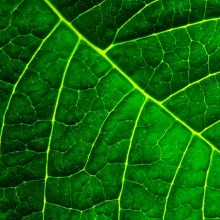
54:18 - How much green skin would we need to photosynthesise?
How much green skin would we need to photosynthesise?
Georgia - Plants manage to get their energy from sunshine. Tiny factories in their cells called chloroplasts convert it through a process called photosynthesis, and these chloroplasts are what give plants their green colour.
But say we gave ourselves a green makeover to use the same trick, how big would our skin need to be? Well, you guys have been busy crunching the numbers on the forum:
R.D. suggests at ballpark figures you’d need about a third of a ballpark.
And Board Chemist has reasoned you’d need roughly an oak tree’s leaves worth of area.
While on Twitter, people were dealing with the bigger questions:
Diane is concerned we’d need big flat heads.
And Parallel Fibres was imagining power hungry humans looking like extremely flabby sharpeis.
Well here to shed some light on the answer is Christopher Mason, Associate Professor at Whale Cornell Medicine.
Christopher - Before I get into the calculations, we’ll have to make some assumptions. The first being that human skin cells would be capable of making and supporting chloroplasts, would also have to assume that there isn’t any immune reaction that rejects the chloroplasts. And that melanin, the pigment that gives skin our colour, doesn’t interfere with chloroplast function.
Georgia - Ignoring these caveats then, how energy efficient would our new leafy skin be?
Christopher - Even if these edited humans and plants performed photosynthesis at the same levels, the process would still not be 100% efficient. No chemical reaction every really is. Let’s argue that we would only maybe convert 75% of the Sun’s energy but plants don’t capture photons perfectly either. Current estimates are about 5% of efficiency.
Georgia - This means that plants can only perform the already inefficient photosynthesis on 5% of the light they’re exposed to.
Christopher - We’ll assume that our new skin cells would act about the same. Also, on average, each human has about 1.7 sq metres of skin and only maybe half of it would be exposed to the Sun say if you’re laying on your stomach and getting the rays that way. On a good sunny day sunlight energy levels are about 300 watts per sq metres, which is enough to power a normal light bulb for about three hours. So, if you put all those figures together, it looks like we’d only be capable of collecting about 34 kilojoules of energy per hour, and you’d need 10 million joules per day to survive as a human. So if we wanted to function at our normal energy levels we would need 290 hours of maximum sunlight to collect enough energy to just get through one day.
However, if by some stretch of the imagination we could expand our skin 300 times to about the size of two tennis courts, we would only need to sit in the sun for about one hour.
Georgia - And, if you live in the UK, sadly even one hour of sunshine is asking a bit much. It’s not easy being green.
Thank you Christopher Mason for showing us the light.
Next week, we’re hanging Norm’s question out to dry:
If water is a solid below zero degrees celsius, a gas above 100 degrees celsius, why then does my washing dry when the air temperature is below 100 degrees?
Related Content
- Previous What's behind the rise in arthritis?
- Next Foraging for food










Comments
Add a comment